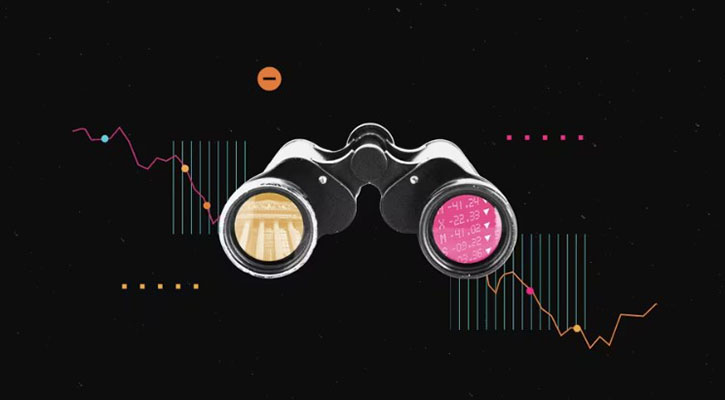Morningstarin Yhdysvaltain rahastotutkimuksen johtaja Russel Kinnel kertoo, mitkä uusista rahastotyypeistä ovat hänestä aidosti kiinnostavia sijoittajille, ja missä taas on vähemmän mieltä. Esimerkit ovat amerikkalaisia rahastoja, mutta saman tyyppisiä rahastoja on tarjottu innokkaasti myös Euroopassa.
Christine Benz: Hi, I'm Christine Benz for Morningstar.com. Which new fund types are worth paying attention to and which can you safely ignore? Joining me to discuss that topic is Russ Kinnel--he is director of fund research for Morningstar.
Russ, thank you so much for being here.
Russ Kinnel: Good to be here.
Benz: Russ, we periodically see types of funds come to market. You might see a great number of new funds of a certain type coming to market. Let's talk about a few of the ones that we've seen over the past several years and whether you think it's a good or bad trend. Let's start with some of the dividend-growth strategies that we've seen coming to market. You generally think that this is a positive idea and a reasonable way to invest.
Kinnel: I like it. It's obviously not a super new idea, but I think it's getting a lot more attention partly because of people's interest in income from equities. But the idea is for funds to look for equities that have a dividend today and can grow that dividend. And that's different from equity income because in order to grow the dividend, obviously, they've got to have growth and they've got to have a strong balance sheet because you can't just keep paying out if you have a weak balance sheet. So, it kind of leads the funds into a little higher-quality, a little higher-valuation companies than you'd see in equity income. Most of these dividend-growth funds end up in our large-blend category rather than large value. But it's a good strategy. It helped in years like '08 when, obviously, balance sheets and debt were really big concerns. So, I think it's a really solid approach.
Benz: You mentioned that the complexion of such a portfolio would be different from an equity-income fund. One thing that's different, too, is that the yields might be a little bit lower in some of these dividend-growth strategies.
Kinnel: Definitely. It's closer to marketlike yield than equity income. So, you're losing some income in the current environment, but you may make some of that up if they correctly pick dividend growers. And you're also getting slightly different defensive characteristics in terms of balance sheet and companies that have a little more growth potential, whereas some of the names you see in equity income like utilities and others have very limited growth potential.
Benz: Let's discuss a couple of funds of this ilk that you think are worthwhile.
Kinnel: I think Vanguard Dividend Growth (VDIGX) is probably the best place to start, just because it's a great fund with a great record, and obviously it has very low costs for very good management. So, it really ticks just about every box. There's a reason it's a Gold-rated fund. It's very hard to find fault with a fund like this.
Benz: And then there's an index fund variant of that dividend-growth fund--Dividend Appreciation (VDAIX)?
Kinnel: That's right. Vanguard has also made Dividend Appreciation, which is the index version. T. Rowe Price has a solid dividend-growth fund as well. So, there are some other good options. I would say Vanguard Dividend Growth is maybe my favorite, but the others are good options, too.
Benz: So, let's discuss another fund trend that we've seen take flight over the past few years--low-volatility investment funds. Let's talk about the thesis there--why that would be a good strategy. It seems like anyone would like low volatility.
Kinnel: Right. That's a little bit of an indicator of why it might be a little oversold, but there's still something real there. Of course, you don't want to get the idea that low volatility means there's no risk or there's no sacrifice because if you're talking about lower-volatility equities, you're still talking about something that's going to be more volatile than a typical high-quality bond fund. It can still lose money. If you go back to '08, of course, just about every equity lost money. So, this isn't bulletproof, but the idea is that you get a little less risk, a little less return, but that can be a very appealing package for the typical investor, as investors tend to be a little risk-shy. And of course, this many years into a bull market, it's not a bad idea to think about the risk side of the equation.
Benz: And there's also some historical data that would indicate that low-volatility strategies--at least in the past--have shown some propensity to outperform other investment strategies.
Kinnel: That's right. The studies on this have shown that you're not giving up much return for a significant drop in risk. So, most of these funds will focus on things like looking for low beta or low-standard-deviation equities. There's really a wide variety of quality funds out there and, obviously, a variety of expense ratios. So, you definitely have to pick and choose your favorites among that group.
Benz: Let's talk about a fund of this ilk that you like--it's another Vanguard fund.
Kinnel: I don't want to sound like a commercial, but [Vanguard Global Minimum Volatility (VMVFX)] is a really good fund because it's taking a number of steps to reduce volatility. It uses a world-stock benchmark, but it then hedges away currency risk because currency is very volatile. And then it looks for less-volatile equities. It's just a modest tilt, so it's not dramatically different from a world-stock index. But it tilts toward the less-volatile end, and I think that's a really useful tool. Obviously, most of your typical world-stock or foreign funds are not hedged at all or hedged very little. So, that's an added level of volatility, and there are times when it's really helpful to dial that volatility down a bit.
Benz: Let's discuss another category. We've really seen a proliferation happen in the exchange-traded-funds space where there are a lot of products coming to market with foreign-stock exposure that is hedged. Let's talk about the pros and cons of such a strategy. Obviously, it has worked pretty well over the past few years as the dollar has appreciated.
Kinnel: Right. The dynamic that's driving this is that the U.S. economy has been stronger than a lot of other economies--particularly in Europe. We're now at a point where the Fed may start to raise rates even while Europe is at a point where they are either cutting--or at least not raising--rates and talking about their own quantitative-easing program. So, it's all bullish for the dollar. One of the tricky parts, though, of course, is that currency movements are so hard to predict. We've even seen that in the last few months since many of these products hit the market. People thought the dollar would keep going up; but, in fact, it gave back a lot of those gains. Currency moves are really hard to predict.
Benz: So, how would you suggest someone use such a strategy in his or her portfolio, if at all? I know one fund that you really like is Tweedy, Browne Global Value (TBGVX), and that is a hedged product. So, do you think it can make sense some of the time?
Kinnel: That's right. I think there are some positives. I think it depends on your own amount of currency exposure. Let's say you have a lot in foreign-bond funds or, for whatever reason, you have a fair amount of foreign-currency exposure; then it might make sense to hedge some of that out in your next investment if you still wanted more foreign-equity exposure. So, I think there's some value there. Obviously, people in retirement might be a little more concerned about currency moves, so I can see some value there. One of the downsides, though, is that currency hedges cost money, especially when everyone thinks that the dollar is going to rise. So, that's a real cost. And, of course, when you are talking about indexing, generally what you want to do with indexing is drive down costs. So, there is something a little counterintuitive and a little counterproductive to hedging in an index fund because you are essentially choosing higher costs. And if currencies are a wash over the time period that you own the fund, then you'll have spent money for nothing.
Benz: The last category we want to talk about is so-called risk-parity funds. First, let's talk about what these funds are.
Kinnel: This is sort of a complicated strategy and really had a lot of hype when it came out, mostly in 2009 and 2010. The idea is to have a balanced portfolio where you have an equal amount of risk coming from bonds and equities. The way you get that is by leveraging up the bond portfolio because, of course, bonds generally have less risk than equities. And these funds take their cues from the market. So, if volatility in the equity market is rising, then they will reduce the equity weighting; conversely, if it's declining, they will raise it. So, in a year like '08, that would have worked wonderfully because rising volatility in equities continued and the equities sell-off was really long-lived. However, in a shorter market movement, it might not work so well. The other issue, I think, with this kind of funds is you are leveraging up bonds at a time when bond yields are really low; to me, that's a really unappealing idea.
Benz: So, we didn't really see product proliferation so much as some dollars going into a couple of funds; but you think, in general, this is a fund type that investors don't need in their tool kits.
Kinnel: No. It's an interesting idea; I don't think it's terrible. But I don't think it's a great design. I don't think it really advances investors in a meaningful way.
Benz: Russ, thank you so much for being here to share your insights.
Kinnel: You're welcome.
Benz: Thanks for watching. I'm Christine Benz for Morningstar.com.





















